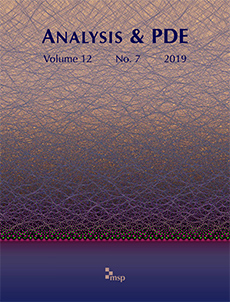Abstract
We consider the following nonlinear Schrödinger equation of derivative type:
If , this equation is known as a standard derivative nonlinear Schrödinger equation(DNLS), which is mass-critical and completely integrable. The equation above can be considered as a generalized equation of DNLS while preserving mass-criticality and Hamiltonian structure. For DNLS it is known that if the initial data satisfies the mass condition , the corresponding solution is global and bounded. In this paper we first establish the mass condition on the equation above for general , which corresponds exactly to the -mass condition for DNLS, and then characterize it from the viewpoint of potential well theory. We see that the mass-threshold value gives the turning point in the structure of potential wells generated by solitons. In particular, our results for DNLS give a characterization of both the -mass condition and algebraic solitons.
Citation
Masayuki Hayashi. "Potential well theory for the derivative nonlinear Schrödinger equation." Anal. PDE 14 (3) 909 - 944, 2021. https://doi.org/10.2140/apde.2021.14.909
Information





